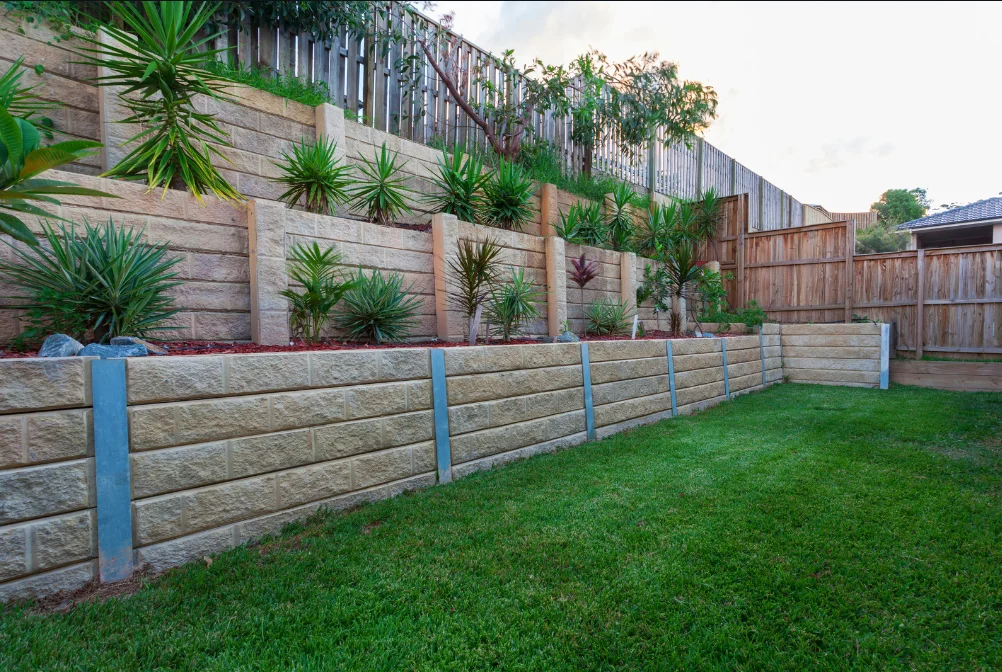When planning a landscaping project, homeowners are often faced with a common question: seating wall vs retaining wall—what’s the difference? While both features involve the use of hardscape materials like stone, block, or concrete, they serve entirely different purposes in both function and form. Understanding their differences is essential to creating a landscape that is not only beautiful but also structurally sound and highly functional.
Whether you’re enhancing your outdoor space for entertaining or managing sloped terrain, knowing when to use a seating wall versus a retaining wall can save time, money, and future headaches. Let’s dive deeper into what sets these two features apart and how to decide which one fits your landscape goals best.
What Is a Seating Wall?
A seating wall is a low, decorative wall designed for sitting. Usually between 18 to 24 inches high, seating walls offer built-in, permanent seating for patios, fire pits, garden areas, or outdoor kitchens. These walls are not meant to hold back soil—they’re purely functional for comfort and aesthetics.
Seating walls are often capped with smooth, flat stones or blocks to make them more comfortable. Materials range from concrete pavers to natural stone and decorative block, often chosen to complement existing hardscape elements. They can be curved or straight, and they often serve as natural boundaries in outdoor gathering spaces.
What Is a Retaining Wall?
On the other hand, a retaining wall is engineered to hold back soil and prevent erosion, especially on sloped properties. These walls are typically much taller and thicker than seating walls and are built with drainage and load-bearing capabilities in mind. Retaining walls are critical for managing elevation changes, protecting foundations, and creating level planting or lawn areas in hilly landscapes.
Unlike seating walls, retaining walls must adhere to local building codes and may require permits or engineering—especially when they exceed 3-4 feet in height. Materials used for retaining walls are often heavier and more robust: concrete blocks, reinforced poured concrete, or even boulders, depending on the height and pressure load.
Key Differences: Seating Wall vs Retaining Wall
| Feature | Seating Wall | Retaining Wall |
|---|---|---|
| Primary Function | Provides seating and aesthetic appeal | Holds back soil, prevents erosion |
| Typical Height | 18–24 inches | 3 feet and above |
| Structural Purpose | Decorative and functional seating | Structural support for earth and slope |
| Materials Used | Pavers, stone veneer, concrete blocks | Concrete blocks, poured concrete, stone |
| Requires Engineering | Rarely | Often, especially over 4 feet |
| Drainage Considered | Not necessary | Always required |
| Permit Needed | No | Usually required |
This comparison highlights that while the two might look similar at a glance, their design requirements and functional purposes are very different.
Read also: Master Hardscaping: Top Tips & Tricks
When to Choose a Seating Wall
A seating wall is perfect for spaces where comfort and ambiance are top priorities. Consider installing one around a fire pit, patio, or outdoor kitchen to encourage guests to linger and relax. It’s a popular choice for homeowners who host frequently or want to maximize their outdoor living space without cluttering it with freestanding furniture.
Design-wise, seating walls also double as visual anchors. They can help define areas without closing them off completely, making your landscape look cohesive and well-planned.
When to Choose a Retaining Wall
If you have a sloped yard or drainage issues, a retaining wall is essential. These structures hold soil in place and allow you to create flat, usable spaces. They’re particularly useful for building terraced gardens, multi-level patios, or raised planting beds.
Retaining walls must be built to last—this means proper footing, base prep, backfill, and drainage solutions like weep holes or gravel layers. Skipping these steps could lead to failure over time, especially after heavy rain or snowmelt.
Can a Wall Be Both?
Yes, in some designs, a retaining wall can double as a seating wall—but only when the wall is short and engineered to support both loads. For example, a low retaining wall around a raised garden bed might have a wide capstone suitable for sitting. However, not every seating wall can support soil pressure, and not every retaining wall is comfortable or safe to sit on. Always consult with a landscape professional before combining the two.
Design Tips for Integrating Both
- Material Matching: Use the same or complementary materials to blend your seating and retaining walls together seamlessly.
- Curved Layouts: Curves soften hard lines and offer more inclusive seating arrangements.
- Lighting Integration: Add LED lights beneath capstones or along the base for ambiance and safety.
- Functional Zones: Use retaining walls for structure and elevation, and seating walls to define social spaces.
Thoughtful placement and design can help both walls work together to create a unified outdoor environment.
Final Thoughts
Understanding the differences between a seating wall and a retaining wall is key to planning a successful landscape. One provides structure and soil retention, the other offers comfort and flow. Whether you’re designing for function, style, or both, make sure your wall serves its purpose—and does so beautifully.
Looking to bring your outdoor vision to life? The experts at ORO Landscape specialize in custom hardscaping solutions that balance aesthetics, durability, and functionality. From engineered retaining walls to elegant seating walls, we’re here to help homeowners transform their landscapes into lasting outdoor sanctuaries.
Contact ORO Landscape today to schedule your consultation!

